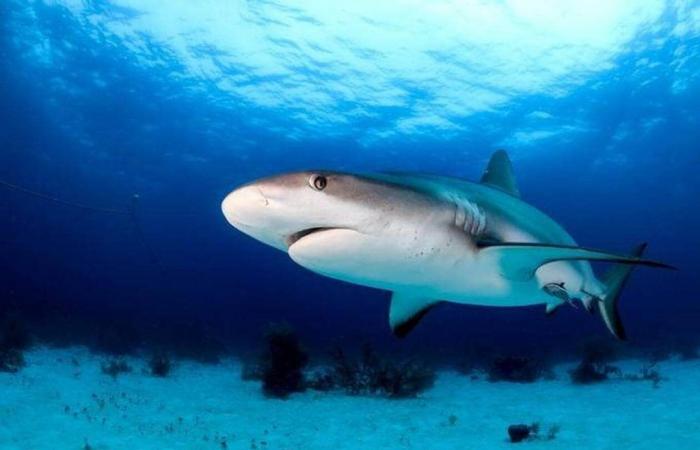By the evening edition.
Sunday June 23, 2024, a Pirate of the Caribbean actor died after being attacked by a shark in Hawaii. Contrary to popular belief, this animal is not the biggest “man-eater”. Here is a ranking of the animals considered the most dangerous.
A few days ago the actor, Tamayo Perry, from the blockbuster Pirates of the Caribbean died following a shark attack in Honolulu, Hawaii. Enough to reignite the debate about the danger of sharks. But when we look at the ranking of Business Insider , the dangerousness is not necessarily where we expect it. As Ludovic Dickel, professor of animal and human ethology in Caen, explains, “It’s not the animals that scare the most that are the most dangerous”.
Read also: France is also home to dangerous animals, here are eight that it is better not to approach
A small sting can be fatal
In first position, with 750,000 deaths, we find the mosquito. Their little sting may seem harmless, but these little blood-sucking creatures transmit, from one person to another, serious diseases such as chikungunya, zyka, yellow fever and especially malaria.
Read also: Why do mosquito bites make you want to scratch?
This disease is the leading cause of death in the world. The WHO estimated the number of cases in 2022 at 249 million and the number of deaths at 608,000. A disease that mainly affects the African continent.
” Man is a wolf to man “
And this is verified in figures. According to the United Nations Office on Drugs and Crime, there were 464,000 homicides in 2019, 90% committed by men. “Most species kill out of fear and to defend themselves, Man is the only one to do so intentionally”comments Ludovic Dickel.
And Man is not a predator only for himself. When we look at the number of animal deaths, humans are primarily responsible. “We no longer count in number of individuals but in tonnage”comments the scientist.
Deadly venoms
Venomous snake bites kill between 81,000 and 140,000 people per year according to the WHO. The most affected countries are in tropical and subtropical regions in Africa, Latin America and particularly Asia, where up to 2 million people are bitten each year.
Read also: Six meters, 250 kg… What do we know about this frightening giant snake discovered in the Amazon?
Unlike other health problems, there is effective treatment. But currently very few countries produce antivenoms in sufficient quantities.
Read also: A big step towards a universal antivenom against deadly snake bites
The dog “man’s best friend”?
Our four-legged friends can also be dangerous. It is difficult to estimate the number of dog bites in the world. In the United States, approximately 4.5 million people are bitten by dogs each year.
Read also: Do dogs feel emotions like humans?
And some carry rabies. The WHO estimates that 59,000 people die from the disease each year, the majority of whom were infected after a dog bite. There is a vaccine and treatment to be administered immediately after the bite, but when symptoms appear, the disease is fatal.
Watch out for freshwater snails
With their small shells, freshwater snails may appear harmless. But they are most certainly underestimated. They can carry parasitic worms like schistosomiasis. This disease is released through the feces of certain infected freshwater snails. Once in water, it is transmitted on contact with the skin. Human-to-human transmission then occurs when an infected person contaminates freshwater sources with their feces containing eggs and parasites.
Read also: To save the snails and help science, all you have to do is… take a photo of them in your garden
After malaria, schistosomiasis is the second most common parasitic endemic worldwide. It is particularly common among children in countries on the African continent. The WHO estimates that schistosomiasis currently causes 11,792 deaths per year, but “These figures are probably underestimated and need to be re-evaluated. »
“Ah! The cro, cro, cro, the crocodiles »
Not all crocodile species are aggressive. They do not perceive humans as prey and attack mainly to defend their territory. But their build and especially their imposing jaws make their attack deadly for humans.
Particularly that of the Nile crocodile which has a reputation for eating men. Between 2010 and 2014, they are responsible for 480 attacks, including 123 fatal ones, in Africa. According to Ocean Conservancy, around 1,000 people worldwide die from crocodiles each year.
Dangerous herbivores
Although hippos are herbivores, they can still be aggressive when they feel in danger. It is estimated that they kill around 500 people each year in Africa. Particularly tourists who unintentionally cross their territory or surprise them during the night. According to National Geographic , “The probability of dying in a human-hippo encounter (86.7%) is higher than an encounter with a lion (75%) or a shark (25%).”
Read also: Why hippo feces are vital to Africa’s lakes
Another herbivore responsible for 500 deaths per year: the elephant. The main reason elephants kill humans has to do with their shrinking habitat, forcing them to move to farmland for food.
Prejudices about carnivores
Other animals have a reputation that far outweighs their threat. Among them, we find the lion with fewer than 22 deaths per year. Around ten deaths are attributed to wolves, whose attacks on humans are much rarer than we think. And the shark Tooth of the sea ? A myth, on average there are only 6 deaths per year linked to their attacks.
Read also: Woman seriously injured by wolves at Thoiry zoo: investigation update
“Some animals are particularly scary”recognizes Ludovic Dickel. It only takes one death for the media to get carried away. ” Ultimately the idea we have of the animal is much more important than the animal itself. »







